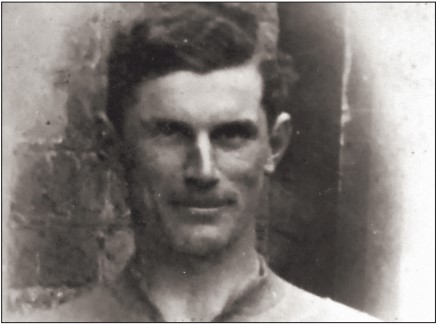100 YEARS AGO: Bloody Sunday
Published in Issue 6 (November/December 2020), Volume 28By Joseph E.A. Connell
Three separate but connected events occurred in Dublin on 21 November 1920, which became known as Bloody Sunday. First came the killings in the morning of eleven suspected British agents in their Dublin homes; two Auxiliaries and two civilians were also killed. Late that afternoon, Crown forces attacked the crowd at a Gaelic football match in Croke Park, killing thirteen spectators and a player. Finally, in the early evening, two high-ranking Dublin IRA officers, Brigadier Dick McKee and Vice-Brigadier Peadar Clancy, as well as a civilian visitor to Dublin, Conor Clune, were killed in Dublin Castle. In all, 32 people died within twelve hours.
Michael Collins, Cathal Brugha, Dick Mulcahy, Dick McKee, Peadar Clancy and others sentenced over twenty British officers at their meeting on 20 November. The names of fifteen out of the 40 men selected for assassination were turned down because of insufficient evidence. Brugha, as minister for defence, was very conscientious and adamant in his judgment—if there were the slightest loophole for uncertainty about an agent or spy, that individual would be removed from the submitted list. Nevertheless, while earlier historians accepted that each man killed had been passed through a rigorous process of elimination before being placed on the list for execution, more recent research questions whether some of the men killed might not have been intelligence officers. Further, two of those killed were innocent civilians.
The IRA set out to kill twenty that Sunday, but some of them could not be found. In the event, fifteen were killed at eight locations: 92 Baggot Street Lower—Capt. W.F. Newbury (courts-martial officer); 119 Baggot Street Lower—Capt. George (Geoffrey) T. Baggally (courts-martial officer); 28 Earlsfort Terrace—RIC Sgt John Fitzgerald (possibly mistaken for a ‘Col. Fitzpatrick’); 117–119 Morehampton Road—Capt. Donald L. McClean (intelligence officer) and T.H. Smith (civilian landlord); 22 Lower Mount Street—Lt. H.R. Angliss, alias Patrick ‘Paddy’ McMahon (intelligence officer), and Auxiliary Cadets Carniss and Morris; 38 Upper Mount Street—Lt. Peter Ashmunt Ames and Capt. George Bennett (both leaders of the intelligence unit); 28–29 Pembroke Street Upper—Major C.M.G. Dowling and Capt. Leonard Price (both intelligence officers) and Col. Hugh F. Montgomery (staff officer ‘in the wrong place’, who died three weeks later); Gresham Hotel, Upper Sackville Street—Capt. Patrick MacCormack (not engaged in intelligence work) and L.E. Wilde (civilian). Collins said:
‘My one intention was the destruction of the undesirables who continue to make miserable the lives of ordinary decent citizens. … If I had a second motive it was no more than a feeling I would have for a dangerous reptile … There is no crime in detecting and destroying, in wartime, the spy and the informer.’
Following the morning raids, a mixed force of Black and Tans, RIC, Auxiliaries and British Army opened fire on the crowd at a Tipperary vs Dublin challenge match in Croke Park, killing fourteen people: Jane Boyle (26), James Burke (44), Daniel Carroll (30), Michael Feery (40), Michael Hogan (24), Tom Hogan (19), James Mathews (38), Patrick O’Dowd (57), Jeremiah (Jerome) O’Leary (10), William Robinson (11), Thomas Ryan (27), John William Scott (14), James Teehan (26) and Joe Traynor (21).

Above: Tipperary footballer Michael Hogan—the only player killed in Croke Park on 21 November 1920. (GAA Museum)
Major Mills commanded the regular British Army back-up troops on the day and reported unfavourably on the actions of the Black and Tans, Auxiliaries and RIC.
Joseph E.A. Connell Jr is the author of The shadow war: Michael Collins and the politics of violence (Eastwood Books).
















